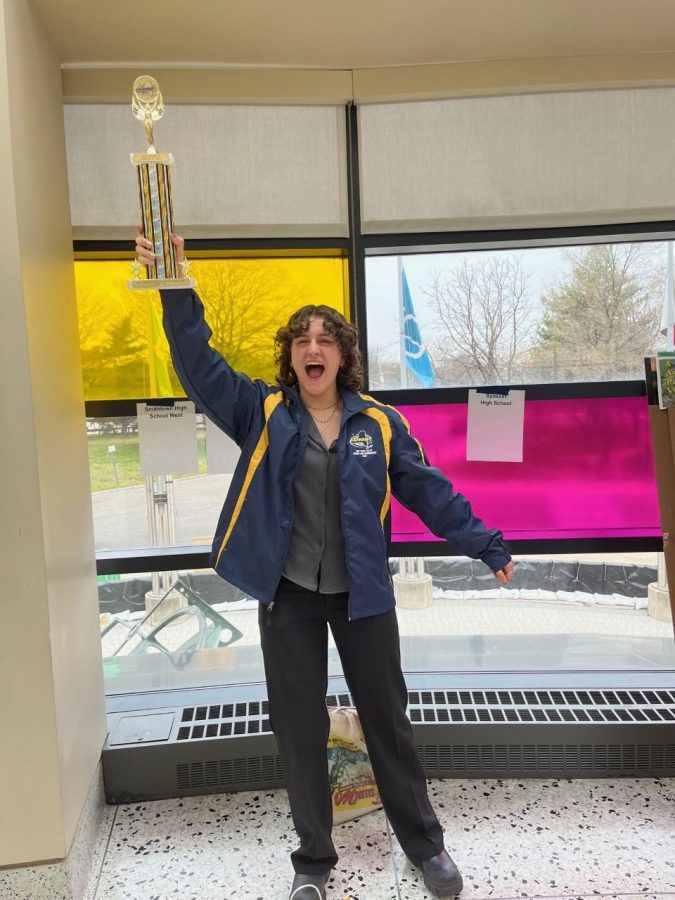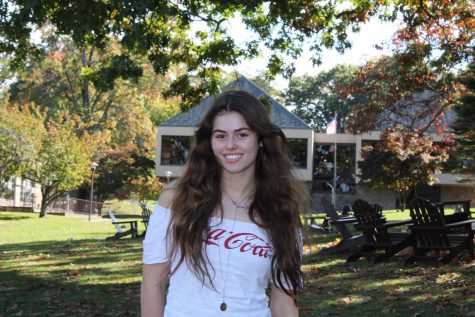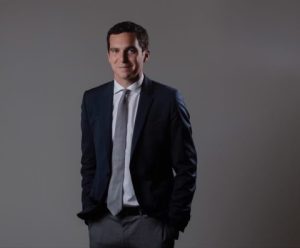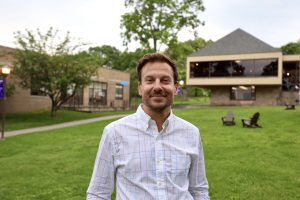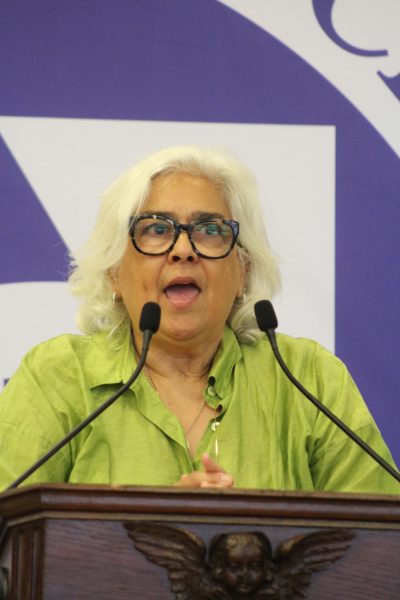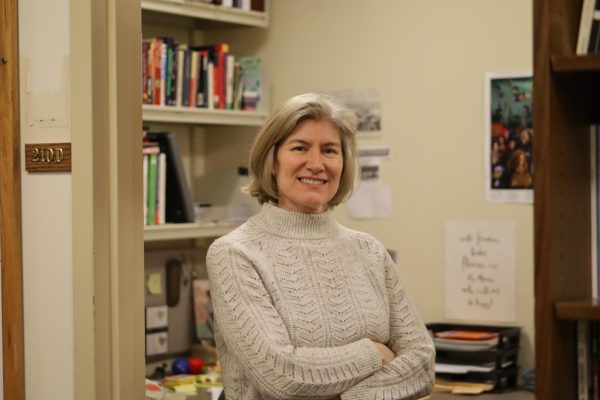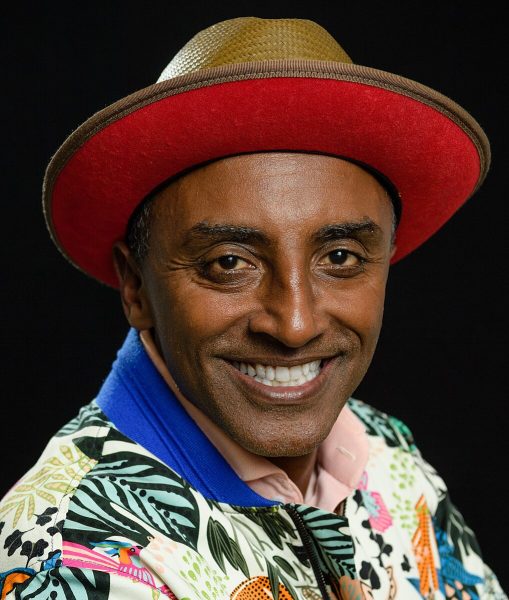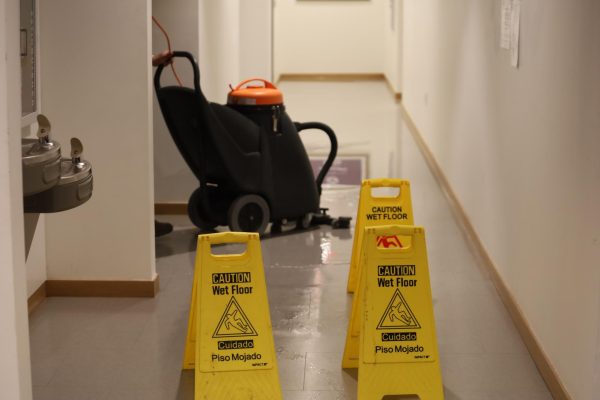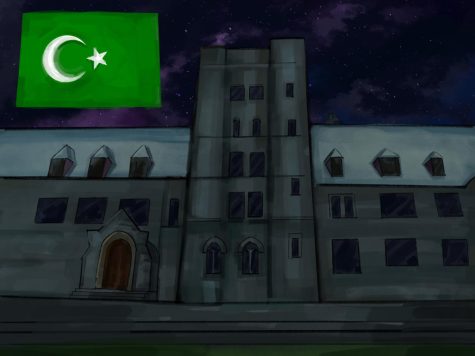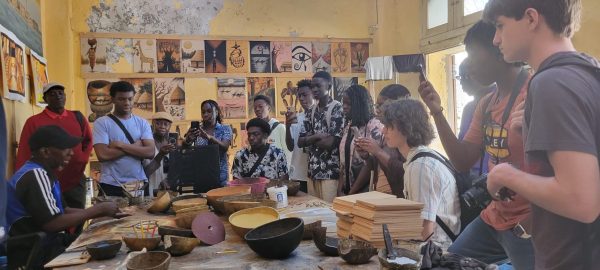Science Research Takes on WESEF
Caterina Stoica celebrating her 1st place WESEF trophy with friends and family
May 3, 2023
In their debut at the competitive Westchester Science and Engineering Fair (WESEF), Masters science research students won a total of four awards, and at the state level fair, New York Science and Engineering fair (NYSEF), five awards and two honorable mentions.
Caterina Stoica is one of the 14 NYSEF candidates to be selected to compete in the International Science and Engineering Fair(ISEF) in Dallas, Texas. The process of formulating her topic of interest, collecting and analyzing data, and putting together her poster has taken two years. This long process required Stoica to keep up her stamina, even if she didn’t feel up to the task. “At times I would be really stuck and had trouble understanding the processes and how to approach the data so I would run into a brick wall. At that point in time it was a lot more difficult for me to motivate myself to sit down and work,” she said.
Her project’s goal was to analyze the brains of people with autism to see if there were any anatomical abnormalities in their brain structure that could be linked to their symptoms and the severity of those symptoms. In order to do this, C.Stoica had to work with MRI imaging to withdraw data and analyze numerical values. This required that she be somewhat proficient in computer science, a realm that she had little experience in. Although she had to teach herself how to code, it was worth it once she discovered her findings.
“I discovered evidence of structural abnormalities in the area of the brain called the thalamus, the thalamic cortical region, which acts as a control center for processing sensory motor information,” C. Stoica said. “ Individuals with autism have sensory motor processing issues and social communicative difficulties so these abnormalities are likely linked to different types of symptoms and the severity of those symptoms,” she explained.
In the upcoming months she will be attending ISEF to present these findings. In addition to qualifying for ISEF she won the Excellence in Medicine Award from the Westchester Academy of Medicine, U.S. Agency for International Development Award, and the U.S. Air Force Award at NYSEF.
Sophomore Michael Stoica, Caterina’s brother, was grateful just for the experience of attending. “I knew that coming in as a sophomore it would be more than okay to walk away just with the experience and not necessarily any awards so I was just honestly so stoked with how much I came away with,” he said. In the end, he left WESEF with two awards: Science Teachers Association of New York State Congress award and First place in the Plant Sciences category at WESEF. He additionally placed 3rd place in the Plant Sciences category at NYSSEF.
His project is about ash trees facing infestation with the emerald ash borer, which is an invasive beetle that has endangered ash trees in the US. He set himself up for a challenge because he was looking for a way to find an early infestation detection which is impossible to know if in the early days of infestation a tree is compromised. He first learned about this when he found that two trees in his neighborhood were being cut down because they were deemed safety hazards and were going to be cut down. This engendered his interest because he realized a research project involving ash trees could give him the unique experience of conducting research and collecting data outside rather than in a lab.
According to Gremski, sophomores make up less than one percent of the total competition so the fact that M.Stoica won three awards is quite impressive.
M. Stoica had a piece of advice for any upcoming sophomores interested in science research. He said, “Just go for it because it is so much easier when you have so many years ahead of you and there’s no pressure to gain an award. So just really seize the opportunity and appreciate being the underdog in the competition.”
Although it was Gremski’s first time guiding Masters science research students for the competition, she felt confident in her students’ capabilities. “Last year I was completely new to this. I was very lucky that last year the students who joined the class were already highly motivated and wanted to do a high level of research,” she said. Gremski additionally underscored the high level of competition at the fair.
She said, “The public schools in Westchester are the powerhouse of science research for the entire country. WESEF is supposedly the biggest science fair besides ISEF in the country. It is bigger than the New York City fair and even bigger than the entire state of California.”
According to Gremski, students Ella Dundas, C.Stoica, and M.Stoica were given the opportunity to rehearse their presentations from one of the WESEF presidents at the competition and get advice. Although Caterina was grateful for the advice from the WESEF president she feels more grateful for the long term help of Gremski. “Kristina Gremski has been really crucial in cultivating my interest and keeping me organized. She was there to keep me on task to keep me up with the deadlines and really push me to get everything prepared and ready for the science fairs.” Caterina said.



